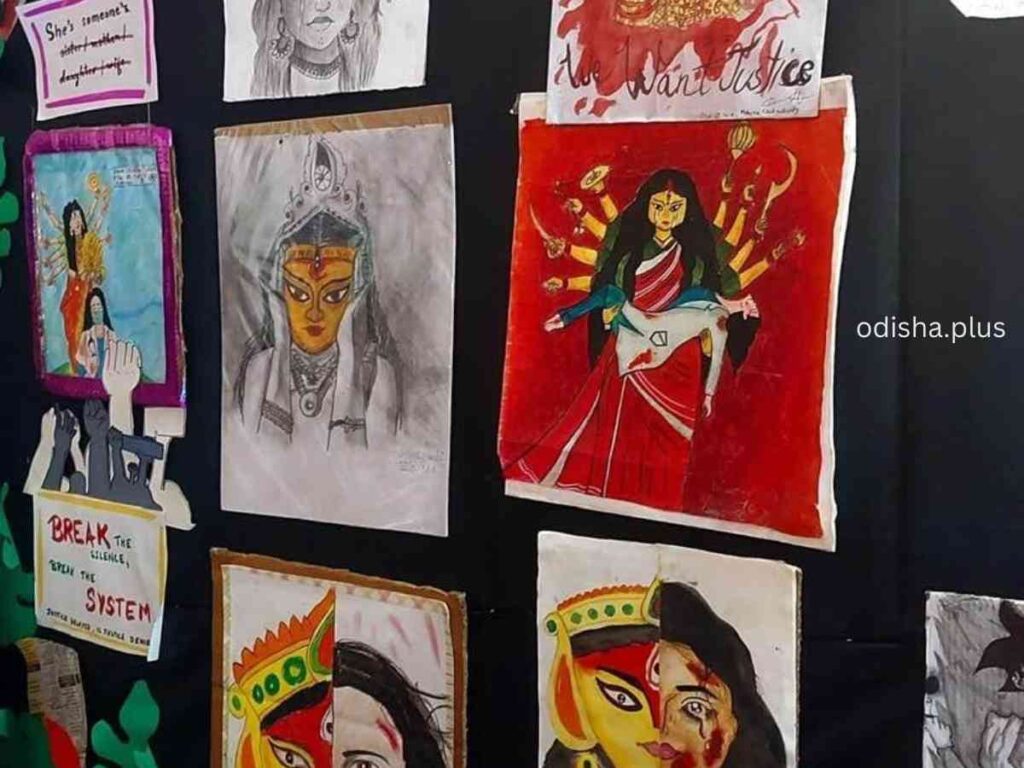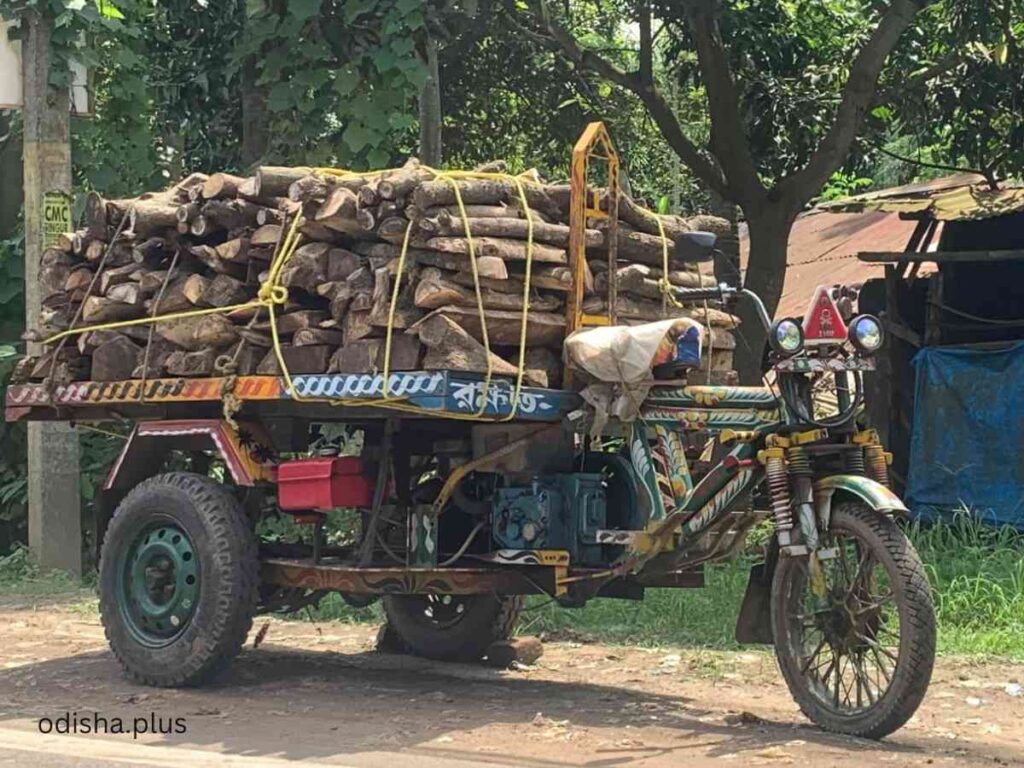India’s rich cultural tapestry includes diverse interpretations of mythology, exemplified by the contrasting views on Goddess Durga and Mahishasur
Mrinal Chatterjee

India is an amazing country with wide cultural diversity. Consider this: generally Goddess Durga is considered to be the slayer of the evil demon King Mahishasur. But there are several communities, who consider Mahishasur as a hero, who was wronged.
Some tribal communities mourn the death of Mahishasur during the Navratri festival. They may avoid going outside or performing rituals during this time.
Other tribal communities, such as the Santhal-Asurs, venerate Mahishasur as a courageous leader and call him ‘Hudur-Durga’. ‘Hudur’ in Santali folk literature means wind blowing at a great speed or storm. They perform a ritual that involves immersing a clay idol of Mahishasur.
In Burdawan, West Bengal the tribal community perform ‘Dasain’ dance for four days beginning Saptami morning to honour ‘Hudur-Durga’.
Adivasi and Dalit groups in some places celebrate Mahishasur Martyrdom, also known as Mahishasur Jayanti, around the time of Durga Puja and Navratri.
Some communities recast Mahishasur as a royal ancestor and believe that Hindus misrepresented his nobility and integrity during Durga Puja.
Some believe that Mahishasur, the buffalo-tribal king who was deceived and killed by Durga. The story of Mahishasur’s death is told in a subaltern version of mythology. Some believe that Durga killed Mahishasur to appease jealous deities. Others believe that the fight was unfair because Mahishasur was outnumbered.
Now look at the accompanying picture (probably created with AI tools) of a cute child-like Ma Durga flanked by the cutest lion and Mahishasur one has even seen on her both sides. I found it printed on a T-Shirt, available online.
Now that truly is India.
Protest through Art
Art has long been a medium and tool for protest. It is said that Valmiki wrote his first sloka, when he saw one of a pair of birds, nesting together being killed by a hunter. It was a mourning for the slain as well as the widowed bird; it was also a protest against the act of the hunter.

Protest through art is a powerful and evocative form of expression that transcends traditional boundaries of activism.
Art in its many forms—painting, music, literature, theatre & cinema—has long served as a vehicle for protest against violence, challenging social norms, criticizing political regimes and advocating for justice. Unlike other forms of protest, art offers a subtler, yet profound way to convey dissent, often appealing to emotions, intellect and moral conscience simultaneously.
One of the key strengths of protest through art is its ability to bypass censorship and reach a wide audience. In authoritarian regimes where free speech is stifled, artists have historically used metaphor, symbolism and abstract representation to disguise the true intent of their work while still communicating their message to those who understand its deeper significance. Iconic works such as Picasso’s Guernica, a depiction of the horrors of war and the music of Bob Dylan during the civil rights era, have become emblematic of resistance and societal critique.
Art’s capacity to foster empathy also makes it a potent tool for protest. Through painting, songs, visual storytelling through performance, art can humanize struggles that might otherwise seem distant or abstract, allowing viewers to see the world through the eyes of the oppressed. Street art, graffiti and public installations are particularly effective in this regard, as they bring the message of protest directly into public spaces, often forcing onlookers to confront uncomfortable truths.
In contemporary times, digital art, memes and social media have broadened the scope of artistic protest, making it more accessible and instantaneous. In all its forms, protest art not only reflects the frustrations and aspirations of society but also has the power to inspire change, offering a mirror to the world while pointing to the possibility of a more just future.
The heinous R.G. Kar Hospital incident in Kolkata triggered massive protests across the country. It also saw a deluge of protest through art. Graffiti has been drawn on roads and walls. Songs have been composed and sung. Recently students of a school in Kolkata drew and displayed their drawings and paintings in response to the incident taking Goddess Durga as a motif.
VANO
We were coming from Santiniketan to Kolkata. A roadblock midway, forced us to go through Singur, known mostly for the failed Nano car project of the Tatas.

I saw a generator operated locally made van, quite common in rural West Bengal parked by the roadside. It is commonly called ‘Bhatbhati’, a classic example of onomatopoeia- word echoing the sound-for the van produces high decibel bhat-bhat-bhat-bhat sound.
But in Singur, these vans are called jugaad vans called ‘Vano’ to rhyme with Nano, the small car Tatas wanted to manufacture at Singur, but failed to do because of agitation spearheaded by Mamata Banerjee, which also brought her to power. During the agitation, people started telling “we don’t want Nano, we have our VANO”.
Enshittification
American Dialect Society, in its 34th annual words-of-the-year vote, selected ‘enshittification’ as the Word of the Year for 2023.
The term enshittification became popular in 2023 after it was used in a blog post by author Cory Doctorow, who used it to describe how digital platforms can become worse and worse. “Here is how platforms die: first, they are good to their users; then they abuse their users to make things better for their business customers; finally, they abuse those business customers to claw back all the value for themselves. Then, they die. I call this enshittification”.
Bangalore
What a transformation Bangalore has gone through in 20 years!
From a garden city with a concrete airport to a concrete city with a garden airport.
(Courtesy: Social Media)
(The author is Regional Director Indian Institute of Mass Communication, IIMC Dhenkanal. Views are personal)





















